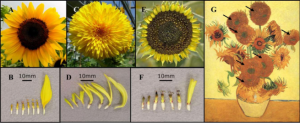 Sunflowers are one of the most important crops in the world. As one of the four top oilseed crops, up to 90% of its fatty acids are oleic or unsaturated in typical sunflower oil. The oil is used to eat and for industrial purposes as well as, of course, birdseed. As of 2009, 2.3 billion acres of sunflowers were cultivated annually with the largest producers being Russia, the United States, Argentina, China and France.
Sunflowers are one of the most important crops in the world. As one of the four top oilseed crops, up to 90% of its fatty acids are oleic or unsaturated in typical sunflower oil. The oil is used to eat and for industrial purposes as well as, of course, birdseed. As of 2009, 2.3 billion acres of sunflowers were cultivated annually with the largest producers being Russia, the United States, Argentina, China and France.
The mutations in the sunflowers below go far beyond anything normally seen in the plant. Recently, though, in a Japanese prefecture northwest and upwind of the Fukushima meltdowns on the other side of the island, a man named Teruo Kitamura made news in mid-August for finding one mutated sunflower in a row of 80 plants that the man had planted by the roadside (See photo – right). Sunflower mutations have been noted in the paintings of Vincent van Gogh according to a report by Dr. John Burke of the University of Georgia released in late March, the Teddy Bear sunflower in van Gogh’s 1888 masterpiece “Sunflowers” (original title, in French: Tournesols – see illustration – left) was found to be a mutant sunflower still cultivated and prized for its pom-pom flower head. The van Gogh sunflower study said the mutation that caused this variant was from a single critical gene.

It seems to take a measurable dose of x-ray and gamma ray radiation to produce sunflower mutants that don’t look too different but may yield higher amounts of oleic and other desirable traits in the plant. Inducing mutations into sunflowers using radiation has been going on since at least the mid 1960s with one constant result: the more radiation the shorter the plants. The sunflowers in this gallery are not only severely mutated, they appear shorter than the normally towering stalks should be.
“Advances in modern genetics, most importantly induced mutations, have altered the fatty acid composition of sunflower oil to a significant extent,” determined an April 2008 study by the Serbian Academy of Sciences and Arts in Belgrade entitled Genetic possibilities for altering sunflower oil quality to obtain novel oils. “Treating sunflower seeds with gamma- and X-rays has produced mutants with 25%-30% palmitic acid.”
The radiation source used in the study increased the palmitic acid but didn’t deform the plants other than, applied in great amounts, stunting the sunflowers. Note that X-rays and gamma radiation were the source. The kind of radioactivity found in ocean-borne mist that may have impacted the sunflowers along the California coast, as revealed in Beta Watch, could be in the form of “buckyballs” which would be made of a molecular cocktail of hot uranium isotopes, 1,000 metric tons of which is pouring out into the Pacific daily at Fukushima Dai-ichi. Hot rain could have showered the sunflowers with Cesium-134 and Cesium-137, both of which are strong beta emitters.
These alpha and beta-ionizing isotopes are far more dangerous than the less damaging X-rays and gamma rays used to induce mutation to increase healthy oil levels. The intense mutative variations of these Goleta sunflowers strongly suggest a radioactive source strong enough to cause different kinds of genetic damage in such profuse and disturbing way. It is also notable, and concerning, that the Japanese sunflower mutation of one in 80 plants 100 miles upwind of Fukushima Dai-ichi is just a fraction of the 100 percent mutation rate of the California sunflowers over 5,000 miles from the source.
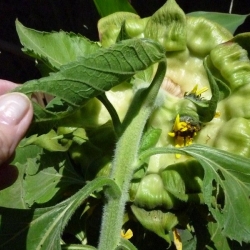

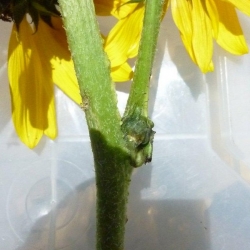
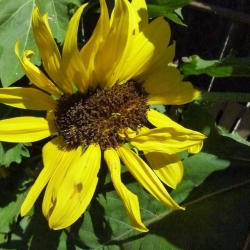


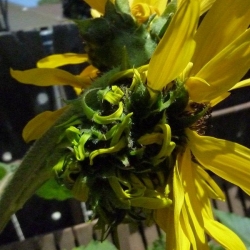
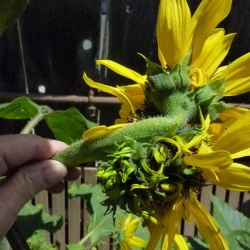
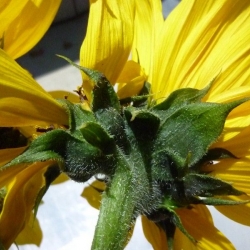


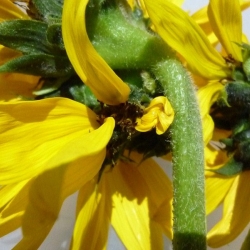
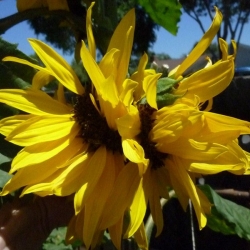












Recent Comments